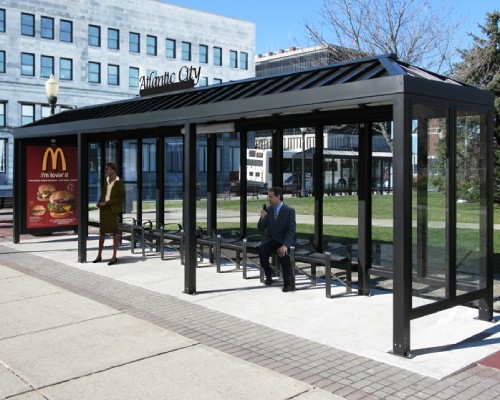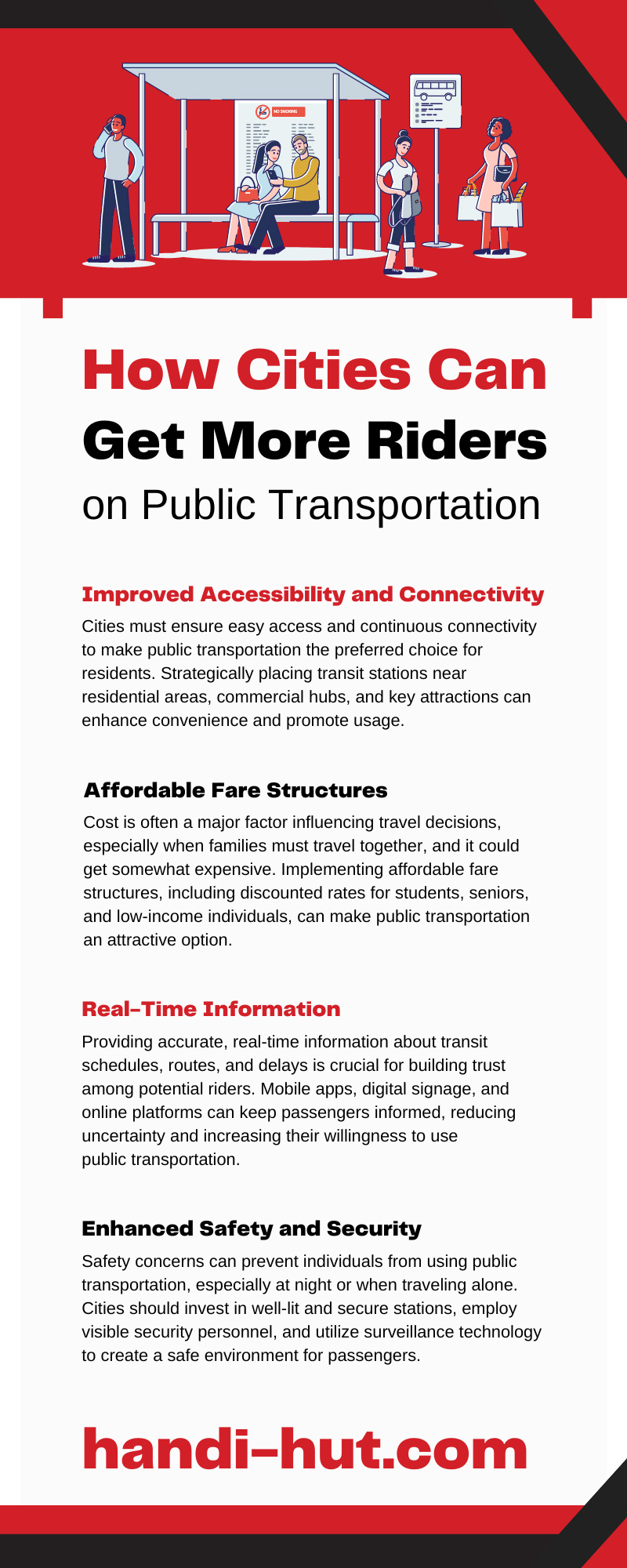
Public transportation is the foundation of urban mobility, offering an efficient, sustainable, and cost-effective means of getting around. People rely heavily on this service, especially in large cities with above-average traffic and population growth.
Even with efficient public transportation, many cities struggle to attract the volume of riders they need to make their transit systems truly effective. As urban populations continue to grow, it becomes essential for cities to find innovative ways to encourage more people to choose public transportation.
Implement these tips in your city to get more riders on public transportation. Public transit provides many benefits, from reducing traffic congestion to improving air quality and promoting a more sustainable urban future. Discover valuable information and effective techniques for encouraging and promoting this service.
Improved Accessibility and Connectivity
Cities must ensure easy access and continuous connectivity to make public transportation the preferred choice for residents. Strategically placing transit stations near residential areas, commercial hubs, and key attractions can enhance convenience and promote usage.
Integration with other modes of transportation, such as biking and walking paths, ride-sharing services, and park-and-ride facilities, can further simplify the travel experience. With the help of new technology, enhancing connectivity can be a simple way to open new opportunities for extension and reach.
Affordable Fare Structures
Cost is often a major factor influencing travel decisions, especially when families must travel together, and it could get somewhat expensive. Implementing affordable fare structures, including discounted rates for students, seniors, and low-income individuals, can make public transportation an attractive option.
Offering monthly or yearly passes at discounted rates can encourage regular commuters to choose public transit instead of driving. Finding ways to keep rates low and improve service efficiency will directly benefit everyone in the city.
Real-Time Information
Providing accurate, real-time information about transit schedules, routes, and delays is crucial for building trust among potential riders. Mobile apps, digital signage, and online platforms can keep passengers informed, reducing uncertainty and increasing their willingness to use public transportation.
Precision and sticking to a schedule are essential to allow passengers to plan their day accordingly with a reliable service, but delays can happen. Providing real-time information focused on schedule changes will give users time to figure out a different route or mode of transportation.
Enhanced Safety and Security
Safety concerns can prevent individuals from using public transportation, especially at night or when traveling alone. Cities should invest in well-lit and secure stations, employ visible security personnel, and utilize surveillance technology to create a safe environment for passengers.
Prefabricated bus stop shelters are an excellent solution for enhancing passenger safety; they have the right characteristics to keep users comfortable and protected. Communicating these security measures can help build confidence in the system to deliver better results.
Comfort and Convenience
People are more likely to choose public transportation if it offers a comfortable and convenient experience. Clean and well-maintained vehicles, climate control systems, comfortable seating, and free Wi-Fi can make the transit journey enjoyable and productive, encouraging ridership.
Innovative solutions, such as charging docks in every seat, could generate a positive reaction among users because smartphones and tablets are a part of daily tasks. Thinking about where the future is going will make it easier to stay ready and provide better transportation options.
Transit-Oriented Development
Designing urban spaces around public transportation hubs can promote a culture of public transportation use. Transit-oriented development promotes mixed zoning, neighborhoods where people can live, work, and play within walking distance of transit stations.
This structure reduces dependency on private vehicles and encourages the use of public transportation. City planners must think about ways to develop a user-friendly experience without compromising functionality and efficiency.
Engaging Marketing Campaigns
Cities can use effective marketing campaigns to create a positive image of public transportation that encourages them to make it their first option. Highlighting the benefits of reduced traffic congestion, environmental sustainability, and cost savings can change perceptions and give people reasons to try it.
Marketing campaigns that use trendy and current images and scenarios will have a better response among users, especially younger ones. Drawing attention to a service in a fun way will create a better environment where users will find enjoyment.
Priority Lanes and Traffic Management
Designating exclusive lanes for buses and other high-capacity vehicles can significantly reduce travel times, making public transportation more attractive for commuters. Efficient traffic management strategies, such as signal prioritization for buses, can further enhance the reliability and speed of transit services. Priority lanes will keep public transportation on schedule, giving users peace of mind that they will get to where they need to be on time.
Public Participation and Feedback
Engaging the community in transit planning and decision-making processes can lead to more user-centric solutions. Conducting surveys, public meetings, and online feedback platforms allows citizens to voice their opinions and preferences, leading to improvements that align with actual rider needs.
Public transportation aims to make users’ lives easier and more comfortable, and understanding their needs and problems will help enhance public services. After thorough research, developers should consider every feedback detail and deliver new solutions.
Incentives and Partnerships
Collaboration with employers, educational institutions, and other participants can result in innovative incentive programs. Subsidized transit passes, employer-sponsored transit benefits, and student discounts can motivate a larger demographic to choose public transportation for their daily commute.
Giving people the opportunity to try a service and enjoy the benefits will provide them with the experience they need to choose a service for the future. Partnerships are great because they provide new, innovative, and unique ideas to transform an already existing project and can gather enough resources from various parties for a larger purpose.
As cities worldwide grow with urbanization and its challenges, increasing public transportation users is a critical solution for multiple problems. Implementing these strategies can help cities create a sustainable, efficient, and accessible transit system that meets the needs of their diverse populations.
By prioritizing convenience, affordability, safety, and connectivity, cities can transform public transportation into a preferred mode of travel, alleviating congestion, reducing emissions, and creating more livable urban spaces for all. Embracing these strategies represents a commitment to building a future where efficient public transportation plays a central role in shaping the cities of tomorrow.

